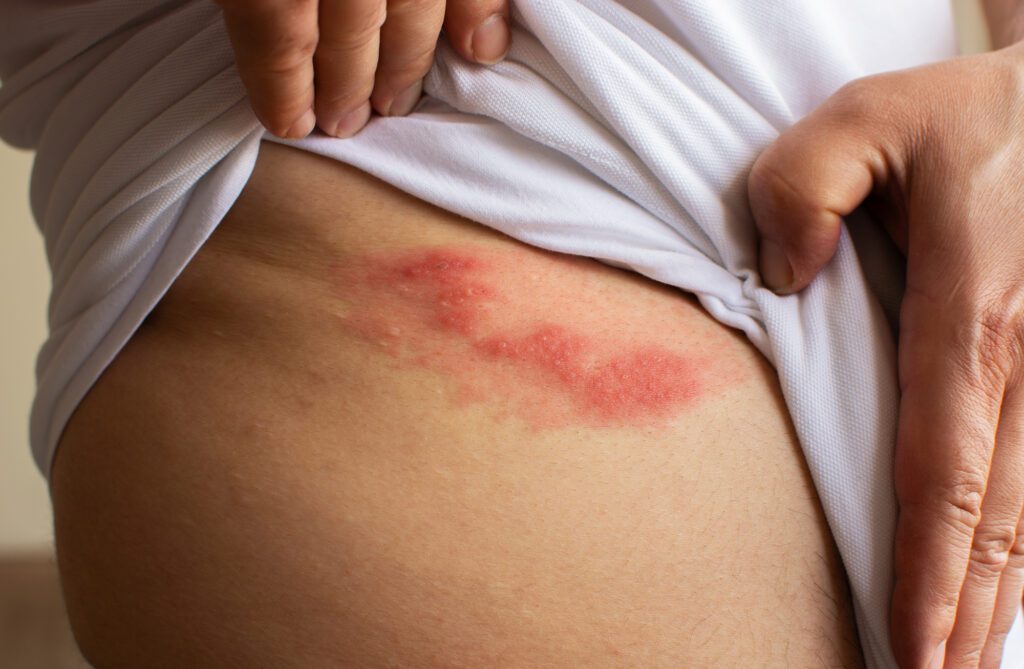A skin rash is itchy. You can’t stop scratching it, so it’s also uncomfortable. Certain rashes can be very itchy and may cause your skin to crack and bleed from all the scratching. In addition, skin rashes appear red, scaly, blistered, or crusty, so they’re embarrassing, given how they look.
You want to find a solution for your skin rash as soon as possible, so you don’t have to endure it. Aside from itching, this condition may include swelling, redness, or burning on the skin’s surface. If your skin rash lasts more than two weeks or patches appear on your skin, you should see a doctor because there can be an underlying cause that needs medical attention.
Here are four steps you can take to relieve a skin rash:
- Identify The Cause
Before dealing with a skin rash, you must pinpoint the cause. This is important because the dermatologic treatment depends on it. Skin rashes can be divided into infectious and non-infectious based on the cause of inflammation.
- Infectious Rashes: They occur when your body’s immune system goes into overdrive, perceiving an invader as harmful and trying to fight it off. A typical example of an infectious rash is chickenpox, which involves high levels of inflammation that can last for several days or weeks after the actual infection has cleared up.
- Non-infectious Rashes: They occur when there’s no evidence that your body’s immune system has kicked into gear. These rashes are often caused by an allergic reaction to pollen, medicine, or even food in your diet. In these cases, the rashes won’t go away until you address whatever caused it in the first place.
When you know the reason for your rashes, you can determine how to respond appropriately. You can browse online for a reliable source about the differences between common rashes and check it out to understand better what’s happening with your skin.
- Avoid Scratching
Most patients feel good when they scratch their rash because it helps them feel better and relieves discomfort. However, scratching aggravates the condition.
So, try not to scratch your rash as much as possible. Instead of scratching, you may want to cover your hands. You can use gloves made of cotton or microfiber to avoid contact with germs. This can prevent the spread of bacteria from one area of your body to another.
- Switch To Gentle Cleansers
While figuring out the cause of your rash, you should refrain from directly applying cosmetic lotions or ointments. If you’re not using a cleanser for sensitive skin, you may want to make the switch.
There are many cheap options approved by dermatologists. Carefully check the ingredients. Stay away from those with fragrances, preservatives, and lots of chemicals. These often trigger inflammation and flare-ups.

- Bathe In Lukewarm Water
Another way to relieve itchy skin is by bathing in lukewarm water. The heat causes your skin to open up and let the bacteria out, helping you to get rid of a rash.
Before bathing in lukewarm water, you may use a washcloth and water directly on the affected area. This can help open up the pores and allow you to remove dead skin cells and clean out the infection more quickly.
You can also soak in a tub of lukewarm water for less than 10 minutes daily if you have a skin rash that doesn’t go away with regular washing. The heat helps loosen up any dried-out skin cells or dead skin cells clogging your pores and causing irritation.
- Take An Over-The-Counter (OTC) Antihistamine
Histamine is a chemical that causes the skin to flush and itch, which can worsen the rash. This can be from a food allergy or an insect bite, but it’s also a sign of an allergic reaction to something in your environment. If you can identify the cause of your rash, you can control it with medication.
Antihistamines help relieve symptoms by blocking histamine. They are available OTC in tablet, liquid form, or as an injectable. These may help you reduce your symptoms and make them more manageable.
If you have a severe rash that isn’t improving with OTC antihistamines, speak with your doctor about taking a prescription. They’re likely to recommend you follow all the instructions in the package to make it more effective.
Key Takeaway
Skin rash is one of the most common skin conditions that people experience. However, despite its prevalence, many people still don’t know how to deal with this condition correctly.
You can do this by knowing the causes of the rash, using gentle cleansers, bathing in lukewarm water, and taking OTC medicine, such as an antihistamine. This way, you can relieve your itch and discomfort while preventing further infection or damage to your skin.




